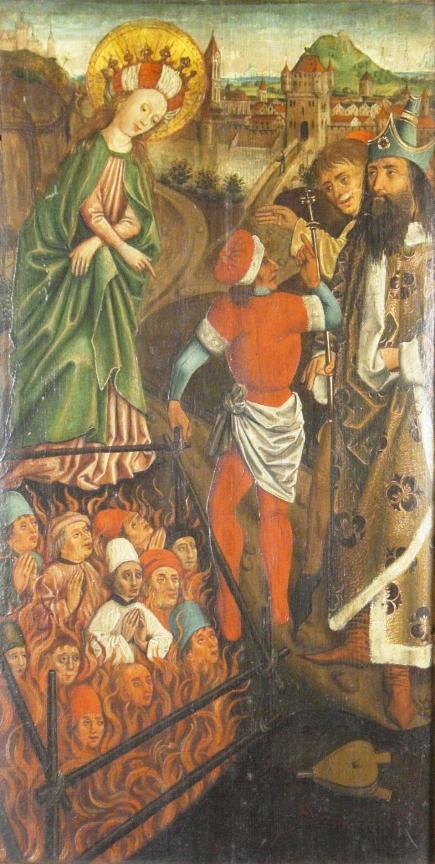A 500-year-old painting will go on display in Macclesfield this November after research by a University of Manchester student led to a full restoration of the work of art.
The painting, titled ‘The Virgin Mary Releasing a Soul from Purgatory at the Intercession of King David’, originally went on display at the West Park Museum in Macclesfield following its opening in 1898 and was initially thought to depict the Virgin Mary.
But research by Anna Rhodes, who works for the Macclesfield museum as part of her Masters Degree in Art, History and Visual Studies, revealed that the painting was misunderstood and had remained mis-labelled until she decided to take a closer look.

MISUNDERSTOOD MASTERPIECE: People thought the 500-year-old painting was of the Virgin Mary but it is actually of Saint Catherine
“My research shows the painting to actually depict Saint Catherine and the burning philosophers and to originate from the Nuremberg region of Germany,” she said.
“The Northern Renaissance module gave me the opportunity to research the painting in detail and gain advice from experts in the field.
“It became apparent that the panel was very unusual and deserved to be conserved and put back on display at West Park Museum.”
The module was taught by Dr Edward Wouk, who praised Anna’s work in restoring and researching the painting.
He said: “When Anna was writing her essay she chose to focus this painting at West Park Museum which was not forgotten but was essentially totally misunderstood and overlooked.
“Her outstanding research has changed our understanding of when the painting is made, where it was made, for whom it was made, and crucially, what it represents.”
The 15th century painting shows Saint Catherine of the Wheel, who was tortured and executed by the Roman Emperor Maxentius for her Christian beliefs.
However, it is said that the spiked wheel he intended to use in torture broke when Saint Catherine touched it, leading to her beheading.
The torture device was later known as a Catherine Wheel, and also lent its name to the popular firework.
Main image of museum courtesy of Mike Porter, via Geograph, with thanks.